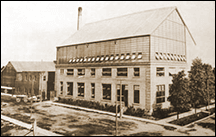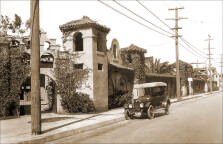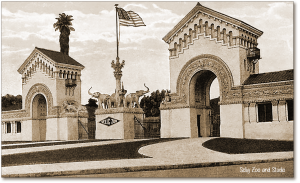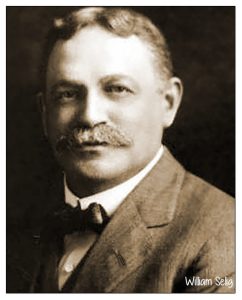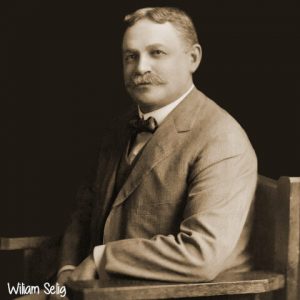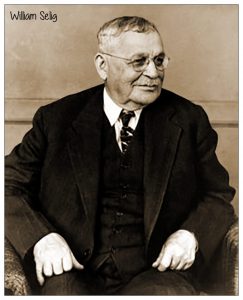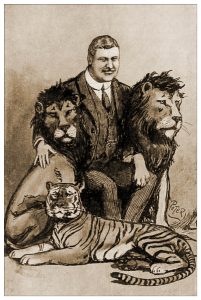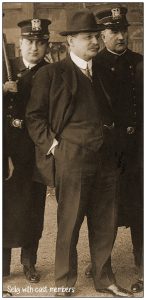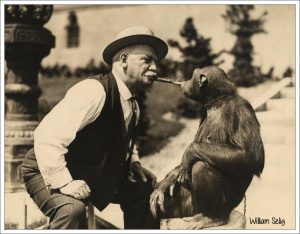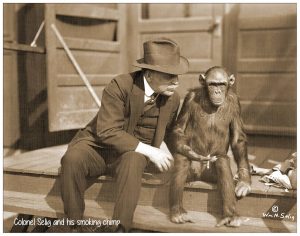"Colonel" William Selig
Not a real Colonel, William Selig was a showman. He was one of the key figures in early American moviemaking and built Chicago's first movie studio, then moved to California and built L.A.'s first permanent studio in the Edendale neighborhood.
William Nicholas Selig was born March 14, 1864, in Chicago, the fifth of eight children raised by a Bohemian shoemaker father and a Prussian mother who left town during as a young man to tour California as a traveling magician and vaudeville showman. He called himself “Colonel, ” not because he was a military man, but to add a bit of esteem to himself.
Show biz was in this blood.
While on tour Selig happened upon an Edison Kinetoscope, one of the original movie viewing systems. He thought he could do that, too, so he returned to Chicago and with the help of a machinist started producing copycats of Edison's camera and Kinetoscope.
1896 founded the Selig Polyscope, becoming Second City's very first moviemaker. He shot whatever he thought would make a few dollars, including industrials, advertisements, and a comedy short subjects. In 1907 he built Chicago's first studio at the corner of Claremont and Byron with a glass stage and a backlot and began making fictional films. In 1909 he built California's first movie studio in Edendale, east of downtown, which became a small movie colony before there was a Hollywood. That was followed by a studio in the Lincoln Park area of Los Angeles, which also doubled as his own private zoo.
Until he permanently moved to California, his Chicago units wintered in Jacksonville, FL. so he could make movies year-round.
World War I caused a major disruption to the entire movies industry. The loss of European markets was fatal to many of the early studios. Selig was no exception and by 1917 Selig Polyscope was out of business, but his studios survived until the mid-1920s and the zoo for a number of years later.
He lived a modest life having lost his wealth. In 1947 he was awarded a lifetime achievement Oscar. Selig died on July 15, 1948, and was posthumously awarded a star on Hollywood's walk of fame in 1960.

